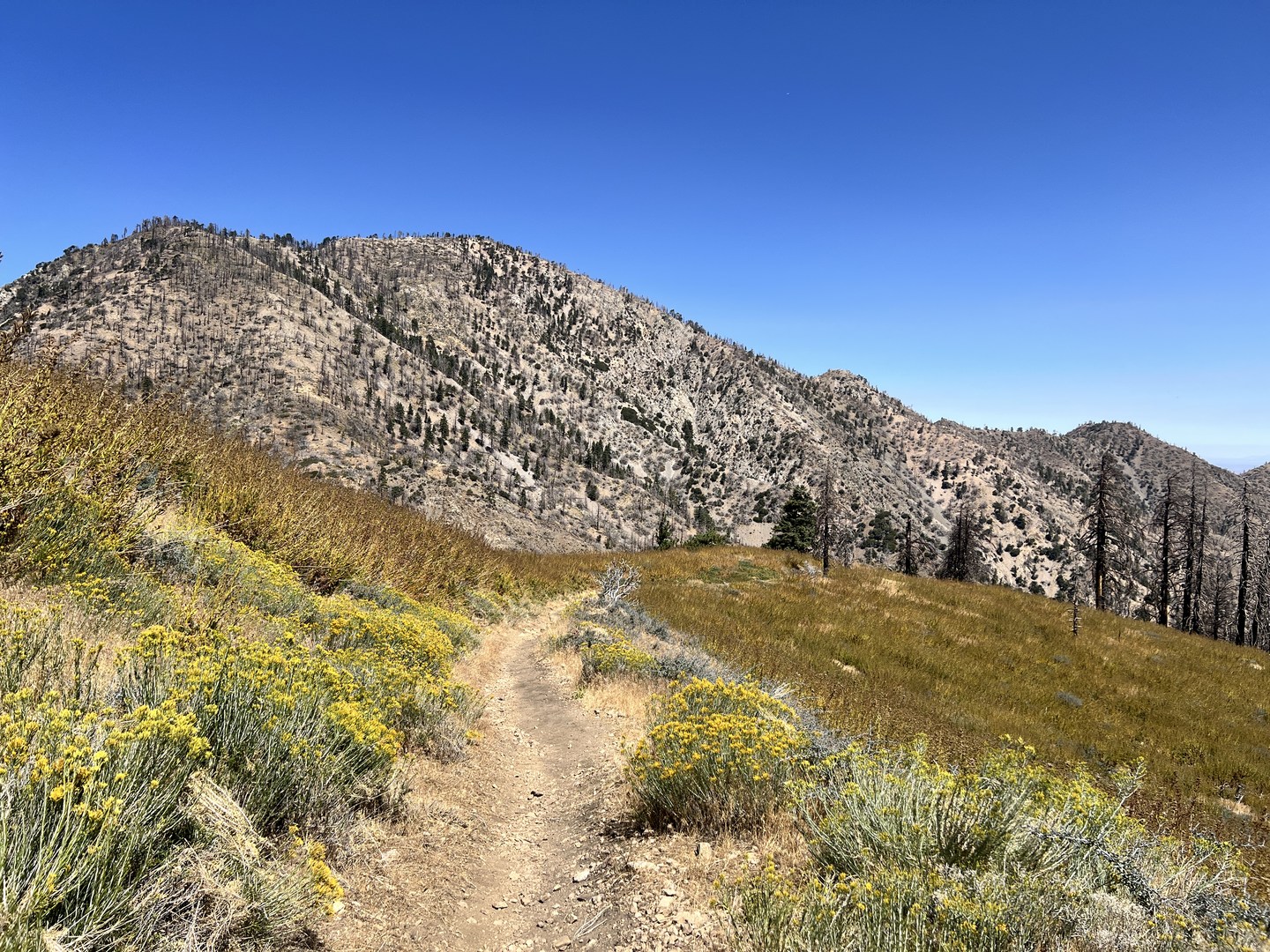You are here
The hike from Islip Saddle to Throop Peak and Burnham Peak is a scenic out-and-back adventure in the San Gabriel Mountains. This moderately challenging 15.6-mile out-and-back hike offers singletrack trail, expansive vistas, and the opportunity to summit two peaks in one trip, both of which are listed on the Sierra Club Hundred Peaks Section Peak List. The route gains approximately 3,897 feet in elevation, providing a rewarding challenge with breathtaking views of the surrounding mountains and valleys. The route follows the Pacific Crest Trail (PCT) for most of the way, making it accessible to hikers, backpackers, and trail runners. Mountain bikes are not permitted on the PCT.
Trailhead:
The hike begins at the Islip Saddle trailhead, located off the Angeles Crest Highway (CA-2). There is ample parking available, but it’s a good idea to arrive early, especially on weekends, as this is a popular starting point for various hikes in the area.
Route Description:
Starting from the Islip Saddle parking area, the trail ascends via the Pacific Crest Trail (PCT). The path begins with a steady climb through a mixed forest of pine, fir, and cedar, offering shade and coolness as you gain elevation. After about 2 miles, the forest begins to thin out, and you’ll start to enjoy panoramic views of the San Gabriel Mountains.
Continue following the PCT as it makes its way up to the junction with the Throop Peak Trail (about 4.2 miles from the start). A short spur trail to the right takes you to the summit of Throop Peak (9,138 feet). From the top, you’ll be treated to expansive views, including Mount Baldy to the west and the Mojave Desert to the north.
From Throop, the trail continues to roll gently along the ridge, offering a pleasant mix of ascents and descents as you make your way toward Burnham Peak. The trail to Burnham Peak (9,001 feet) is less defined but can be reached by a short detour from the PCT. This peak offers equally stunning views, making it a worthwhile stop before heading back.
Flora and Fauna:
This hike offers a rich display of alpine flora, including Jeffrey pines, white firs, and sugar pines. In spring and early summer, you may spot wildflowers such as lupine and Indian paintbrush along the trail. Wildlife in the area includes mule deer, black bears, and a variety of birds, including Steller’s jays and mountain chickadees.
When to Visit: The best time to hike this trail is from late spring to early fall when the weather is mild and the trail is clear of snow.
ADDITIONAL INFORMATION
Permits: No permits are required for this hike, but an Adventure Pass is required to park at the Islip Saddle trailhead.
Water: This route passes by Little Jimmy Spring and may also pass by seasonal springs. Prepare by carrying enough water for your journey, and remember to filter or treat any water collected in the backcountry.
Leave No Trace: As always, follow Leave No Trace principles to help preserve the natural beauty of the area. Pack out all trash, stay on designated trails, and avoid disturbing wildlife.
Wildfire: A portion of this hike was impacted by a recent wildfire, devastating much of the vegetation and leaving some hillsides barren. Be mindful when hiking through this fragile terrain, as the recovery of the ecosystem is ongoing and the area may be more prone to erosion and loose footing. Additionally, watch out for poodle dog bush, a plant that thrives in post-fire environments and can cause skin irritation similar to poison oak.























Comments
Sign In and share them.